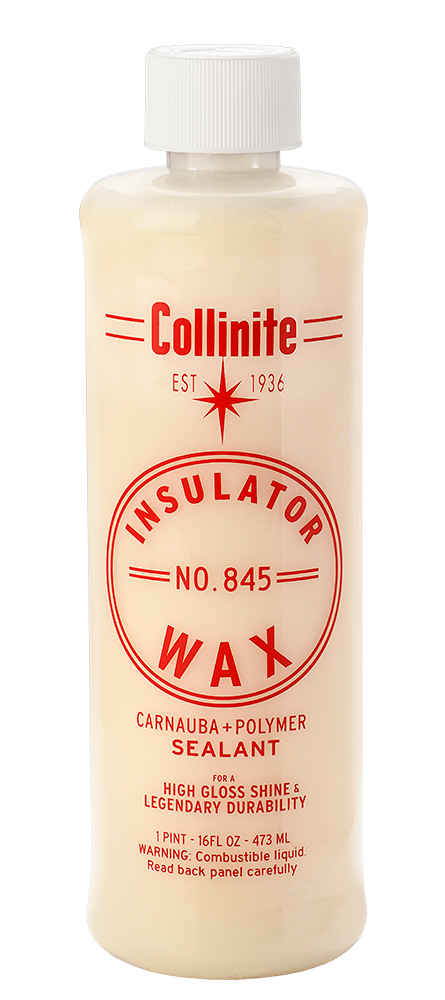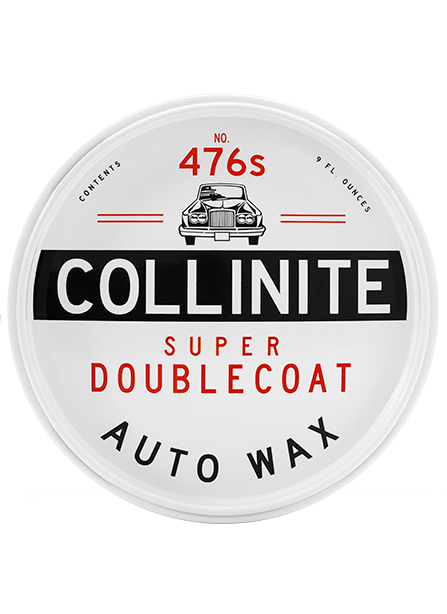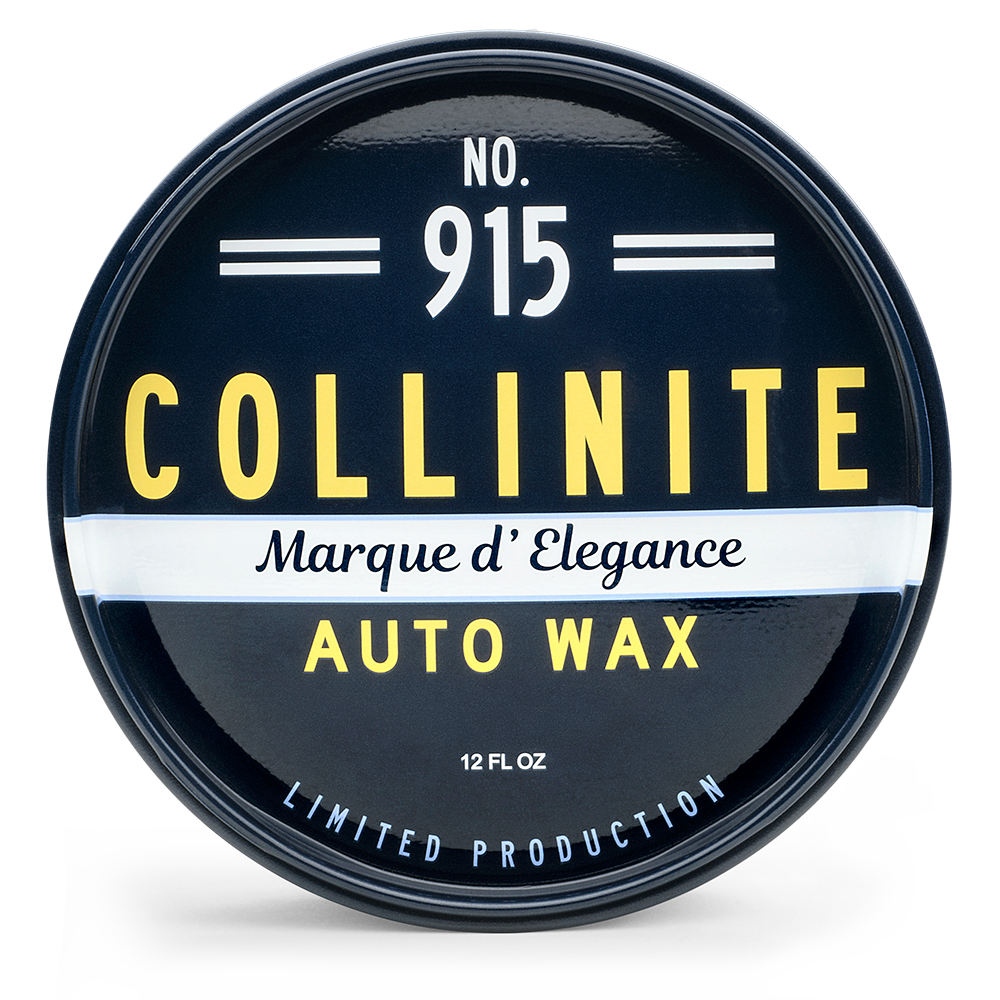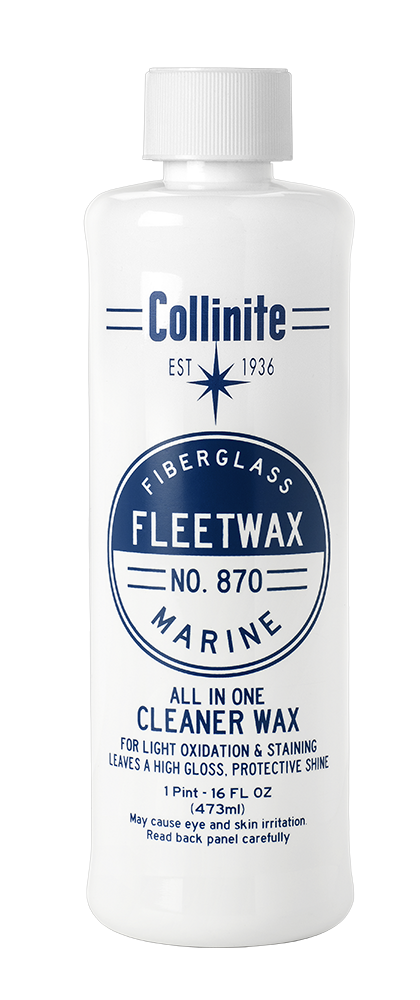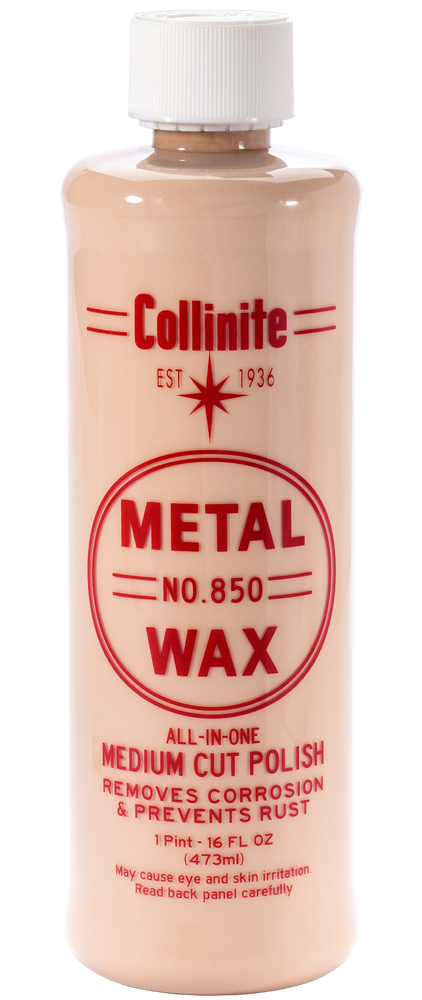We’re Going Streaking
Us waxers are an ambitious, impatient lot. We want to beautify our rides-car or boat… whatever the cost, whatever the weather. The problem is, our detailing desires occasionally get the best of us.
I spoke to a gentleman from Pittsburgh today. He’s been using Collinite’s No.845 Insulator Wax (IW) for over 15 years. He explained a problem he’d encountered this past weekend. After the IW was removed, his black SUV looked great, but he was noticing slight streaks once the vehicle was brought out into the sun.
Here in the states, cold weather is beginning to set in; especially where we are in the northeast (nights are beginning to drop into the 40’s). We all know how this goes; that inevitable urgency we can’t shake to get an extra coat of winter wax on our car or boat to protect against Mother Nature’s future wrath. And herein lies the predicament. Cold nights lead to cold surfaces. Cold surfaces lead to wax drying harder and faster during hurried wax jobs the following morning. And this can lead to wax steaks-unsightly, frustrating, awful wax streaks. Streaks lead to customers asking, “What did I do wrong?”
Some things to remember when using Collinite last step waxes this fall:
1. Following a wash, ensure the finish is free of imperfections; water spots, pre-existing wax, residues, swirls, stains, discoloration etc.
2. Air temperature does not = surface temperature. Just because it’s 11:30AM and 72 degrees F, doesn’t mean your car or boat’s surface is suitable for wax application-paste wax or gel wax. The finish is still warming up from a possibly cooler night. You’re running the risk of streaking the surface if a coat is put down too soon. Optimal conditions are as follows:
• Surface is lukewarm-room temperature to the touch
• Surface is out of direct sunlight
• There is little to no wind factor
3. Thin layers, means THIN layers. Sometimes, when detailing we start applying in thin coats, but subconsciously add more wax as we go on, thinking it’s going to improve Collinite’s signature durability or shine. It won’t. It will create streaks. Apply as thin and as evenly as you can.
4. Watch your set up times. Don’t go with an arbitrary time framework (i.e. 3 minutes, 5 minutes or 30 minutes). Different conditions will invariably affect how long it takes the wax to dry. Use your eyes-look to see when the wax changes pigment and begins to cloud or haze as this is your most important visual cue for removal. It will go from clear to a white cloudiness. When that begins to happen, remove immediately.
5. Skill and familiarity with Collinite is easily one of the biggest variables we come across. Some detailers have different preferences when it comes to set up/drying times, sometimes allowing Collinite waxes (gel or paste) to harden even further past the hazing/pigment changing phase. This is where detailing proficiency/skill, equipment, prep work, finesse, and a comprehensive knowledge of paint and products really come into play. One detailer’s preference could be a novice’s nightmare when it comes to removal. If you’re a newbie with Collinite, always work in small sections at a time (2X2 ft).
6. If streaks result because one of the aforementioned tips was not considered, try misting the surface with cold water or quick detailer product, and then remove with microfiber towel. An initial wash may also make the streaks disappear.
What tricks or tips made you rethink your Collinite application and removal process? Email [email protected] or tell us on Facebook. You could win a Collinite t-shirt ….always a great way to cover up after some streaking.
FAQs
Automotive
No.415 Color-Up Cleaner is an economically designed compound best suited for the removal of clear coat staining, brake dust, oxidation and other paint imperfections that can be commonly remedied by hand use. No. 415 can be used by both hand and DA polisher.
No. 390 Polish utilizes advanced abrasives specifically engineered to remove swirls/fine scratches while leaving behind a professional, mirror finish. To achieve these desired results, No. 390 is designed for machine use only (DA polisher and rotary).
No S-845 Speed Wax is designed to maintain and enhance an existing coat of any Collinite Sealant Wax (845, 915, 476s). While it does not replace the durable base coat durability found in one of our waxes, it does offer its own stand alone protection of up to 2 months. It can be used as often as desired to boost beading and provide a slick showroom gloss.
There are 2 options:
1. No. S-845 Speed Wax is the most effective option if boosting shine, gloss and protection are your primary objectives.
2. If a gentle cleaning (to address dust/prints/droppings/water spots) requiring surfactants is your primary objective, No. 520 Detailer is your best option. No.520 will also leave protection.
On average, S-845 Speed Wax will be 30-40% more durable than No. 520 Detailer.
Collinite 845 can also be layered over itself if additional protection and shine are desired
Ceramic Coatings: Many professional detailers are successfully using 845 Insulator Wax as a topper for ceramic coatings. Check with the coating manufacturer whether a carnauba-polymer wax is suitable over the coating
Paint Protection Film (PPF): 845 Insulator Wax was tested successfully by the tech department at XPEL PPF. For additional information on Collinite wax’s compatibility with PPF, please contact us directly at [email protected].
845 will take on a thicker gel consistency in colder temperatures and a thinner liquid consistency in warmer temperatures. The different viscosities do not alter the performance. It can be used in either form.
Yes. Collinite 845 Insulator Wax is Collinite’s most “machine friendly” automotive wax. A finishing pad and low speed are optimal in order to obtain professional results. By hand, a thin layer is recommended to one section at a time. With DA and by hand, microfiber towels are recommended for removal. For one midsized vehicle, 2-3 towels are suggested.
Yes. Wait a minimum of 12 hours between coats to allow the product to fully cure.
While 476s is a traditional hard paste, it can be easily applied and removed. We recommend applying a thin layer to a small section (2 x 2 feet), and remove the wax once it comes to a haze. Typically, this takes anywhere from 1-3 minutes.
476s contains the highest concentration of polymer protection to withstand the harshest elements for the longest period of time. For this reason, we recommend 476s as a protective coating prior to the winter months.
915 is specifically formulated to provide a deeper show room shine to darker colored, vibrant and metallic flake clear coat finishes. 915 contains the highest concentration of carnauba wax while still offering a high degree of polymer hydrophobic protection.
Yes. 520 should be used regularly to remove fresh contaminants with its high lubricity formula. It will increase the life of an existing wax coat with its unique bead and sheet shine. It is compatible with all of Collinite’s finishing waxes (845, 476s, 915).
It is recommended that 520 be used over a base coat of one of Collinite’s finishing waxes for maximum protection. However, as a standalone, the product will provide water beading durability for up to 4 weeks as it is “Insulated” with Collinite’s signature polymer-carnauba wax protection.
With the aid of a DA polisher, No. 390 polish is designed to remove below surface contamination such as swirls, haze, marring and fine scratches. No. 415 is designed to remove other below surface contamination like clear coat staining, brake dust, & oxidation (and other contaminants that can commonly be remedied by hand use). A clay bar removes above the surface contaminants such as mineral deposits, embedded debris and tar.
If you have a smooth, contaminant free surface, 325 would not be necessary. While 325 is completely clear coat safe, it is designed to renew neglected paint finishes. It is meant to gently restore and protect the paint.
850 is an abrasive medium cutting polish and is designed to restore bare metals. If your metal is brand new or in brand new condition, we suggest protecting it with a pure wax (No. 845, No. 925 or No. 885). Use of No. 850 should also be avoided on painted metal as well as anodized aluminum.

